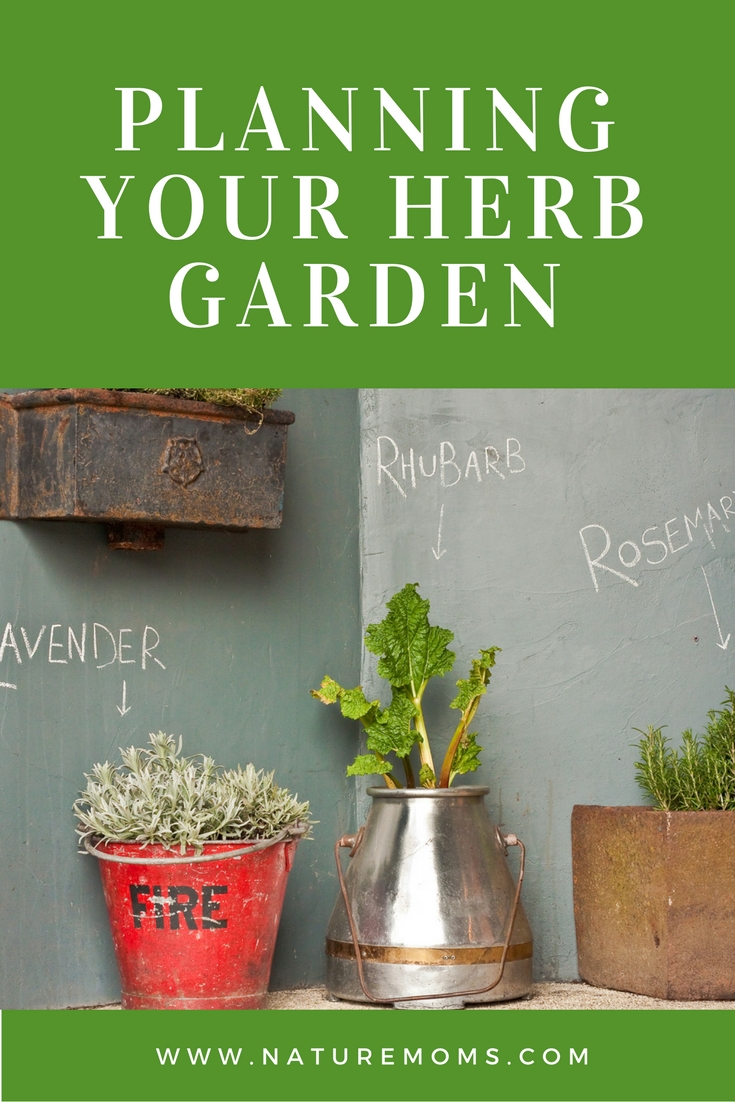 This time of year is when many people start to dream about their gardens come spring and they start to prepare by ordering seeds, cultivating starter plants, and designing the layout of their garden. This is what I have been doing this week…which reminds me…I need to send my husband after some bales of straw for the garden.
This time of year is when many people start to dream about their gardens come spring and they start to prepare by ordering seeds, cultivating starter plants, and designing the layout of their garden. This is what I have been doing this week…which reminds me…I need to send my husband after some bales of straw for the garden.
One big part of gardening for me is growing fresh herbs. I usually grow them in my kitchen windows so that I can easily grab them when I need them to add to foods that are cooking. I would be an unhappy camper if I did not have fresh cilantro for salsa or fresh dill for salmon fillets.
Would you like to have your own herb garden? Here are some helpful tips to help you get started.
Decide which herbs you want to grow. Perhaps you can begin with the most widely used: sage, rosemary and thyme. Of course those aren’t the most widely used in my home so pick whatever works for you. You can include dill, mint, chives, and cilantro (which will ultimately produce coriander seeds). But you have to choose those according to your needs as well. For example, coriander, dill and basil (which are annuals) die after one season. Parsley lives for two seasons (called biennials); and chives, fennel, thyme, mint, marjoram and tarragon are perennials; which means they bloom every year.
Once youve decided, you can grow an herb garden in an area away from your plants and flowers. Determine the size of the herb garden. Then ensure to keep the annuals and perennials separate from each other. Perhaps drawing a diagram will help you determine what herb is to be planted and where.
The secret to a successful herb garden is drainage. When you choose the site for your garden, make sure you consider drainage and soil fertility first. If the ground does not have proper drainage, your garden will fail. To improve drainage at the garden site, remove the soil to a depth of 15 to 18 inches. Place a 3-inch layer of crushed stone or on the bottom of the site. Before returning the soil, mix some compost or peat and sand with it to lighten the texture. Then, refill the site higher than the original level to allow for settling of the soil. Since the soil does not have to be fertile, it does not require additional fertilizer. Fennel, in particular, does require moderate amounts of fertilizer. You may want to plant it in a separate area. Always refer to your garden supply expert on matters of soil and fertilization.
Once the site and soil are ready for planting, you can proceed to purchase the seeds. While there are very few diseases or insects which attack herbs, dill and fennel may be prone to attack by red spider mites, especially in hot and dry weather. In addition, if you are planting mint, note that it has to be contained so as not to take over your entire garden. A good rule of thumb is to plant them in a can or bucket; and punch several holes just above the bottom rim to allow for drainage. A clay pot can also be used. Sink these into the ground. This method should keep the plants confined for several years.
As you may know, herbs can also be grown in containers, window boxes, straw bales, or hanging baskets. That is what I do. My windows are overflowing with herbs all year long. These methods will require more care, especially watering. If possible, sow seeds in shallow boxes in late winter, then transplant the seedlings outdoors in the spring. A light, well-drained soil is best for starting the seedlings indoors but be careful not to cover the seeds too deeply with soil. The rule of thumb is, the finer the seed the shallower it should be sown. Sow coriander, dill, and fennel directly in the garden since they do not transplant well.
For biennials, sow the seeds in late spring directly into the ground. Work the soil surface to achieve a fine texture; then wet it slightly. Sow the seeds in very shallow rows with soil over them. Do not sow the seeds too deeply. Fine seeds, such as marjoram or thyme, will spread more evenly if you mix them with sand. So too, it is important to cover the fine seed bed with wet burlap or paper to keep the soil moist during germination. Water the seeds with a fine spray to prevent the washing away of the soil.
You may begin picking the fresh leaves as soon as the plant has enough foliage to ensure growth. Pick the leaves or seeds after dew has disappeared, but before the sun becomes too hot. For dry, winter use, harvest leaves before the flower buds open.
To protect your perennial and biennial herbs, use mulch about four inches deep to protect the plants. Apply the mulch after the ground has frozen in early winter. Do not remove the mulch until the plants show signs of growth in early spring. Early removal could result in some early frost damage, depending on your area. Feel free to leave me a comment and tell me what herbs you like to grow and why.


If you don’t have a garden, can you leave them in containers in your house all year??? What a wonderful idea!
Yes I grow them all year long!
Pingback: Herb Gardens » Growing My Garden